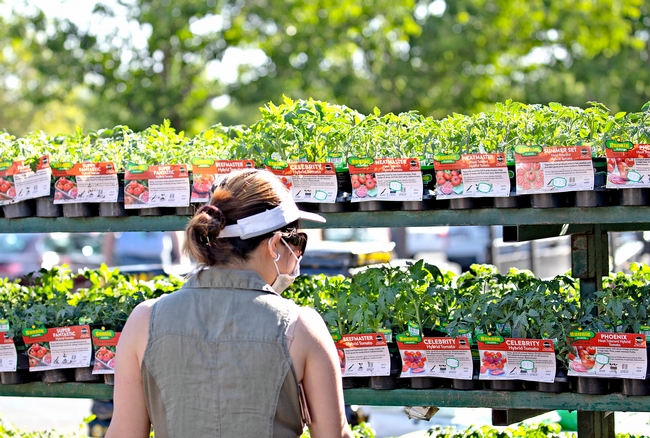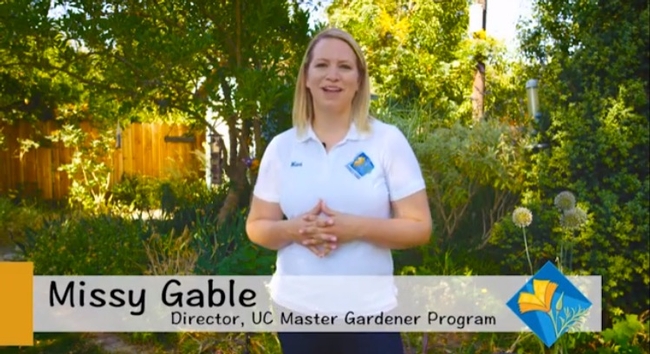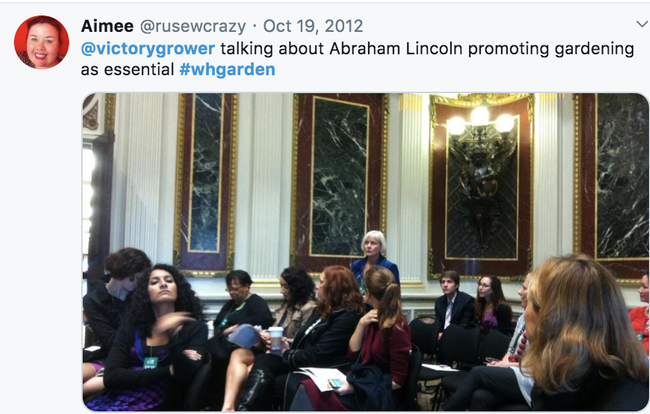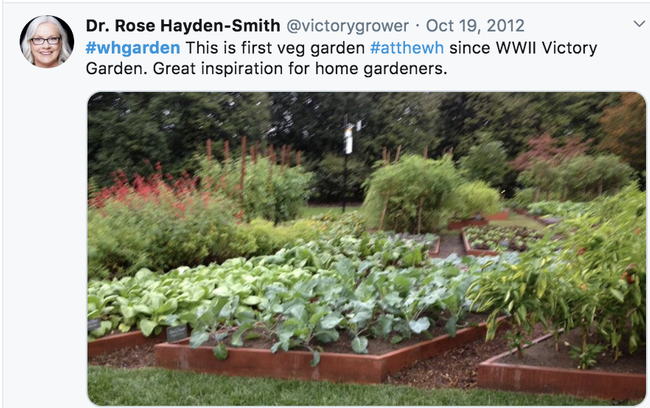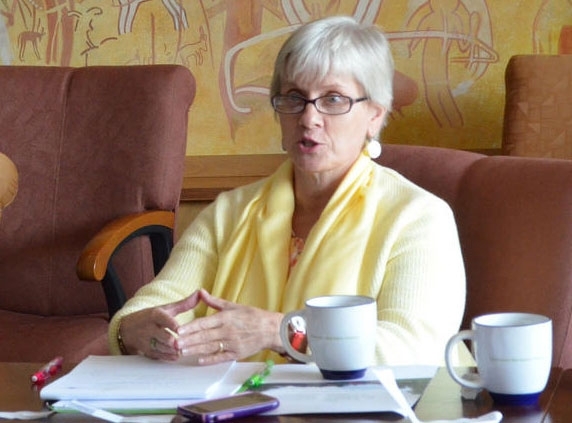
Posts Tagged: Rose Hayden-Smith
ANR in the news May 1-15, 2020
How coronavirus is affecting the food supply
(Spectrum News) Jennifer Rufer, May 15
…Daniel Sumner, Executive Director of the University of California Agricultural Issues Center at UC Davis, tells Inside the Issues the meat shortage is a direct result of COVID-19. Because workers are typically in such close quarters, some are getting sick. The Centers for Disease Control and Prevention found 3 percent of workers in 100 meat processing plants have tested positive for the coronavirus, which, Sumner said, could mean the production won't be as robust as it used to be.
He said one of the bigger disruptions to the industry has been the impacts on cowboys and farmers who only provide one product.
“If you're a pig farmer, that's what you've got. The pigs are ready to go. So, everyday that you keep that hog, a 300 lb. hog, ready to go, you're losing money,” he said. “The same with cattle that are ready to go and there's no place to put them. That has shown in the price of cattle, and the price of hogs collapsing.”
The Surprising Backstory of Victory Gardens
(JSTOR Daily) Madeleine Compagnon, May 15
…Cultivating the earth as a response to moments of crisis dates back over a century, but not just as a relaxing activity. During World War I, writes Rose Hayden-Smith, a major Victory Garden movement promoted the idea of gardening as a civic duty. The goal was to increase food production on the home front, under the reasoning that the conservation of resources on the home front was key to victory on the battlefield. Garden propaganda was “striking in its use of military imagery,” according to Hayden-Smith's article. Poster campaigns often depicted “regiments” of women and children as “soldiers of the soil,” marching alongside U.S. troops.
https://daily.jstor.org/the-surprising-backstory-of-victory-gardens/
Revised Budget Features Significant Cuts to Close $54 Billion Deficit
(AgNet West) Brian German, May 15
…In his summary describing the state's economic position moving forward, Governor Newsom highlights federal assistance as playing a sizable role in structuring California's budget. Several reductions have been proposed if the state does not receive sufficient funding from the federal government, such as a 10 percent reduction in support for the University of California system. The UC Office of the President, UC PATH, and the UC Division of Agriculture and Natural Resources (UC ANR) would experience a decrease of more than $34 million in funding. New initiatives that were highlighted in the January budget, including the nearly $170 million in general funds for supporting a five percent UC base increase, have been now been withdrawn. The revised budget also eliminates another $3.6 million that would have supported a five percent base increase for UC ANR.
http://agnetwest.com/revised-budget-features-significant-cuts-54-billion-deficit/
$50 ribeye to go? Expect higher meat prices at Bay Area grocery stores and restaurants – (SFChronicle) Esther Mobley, May 14
…But while the supply of beef and pork in the U.S. has been down 10-15% in recent weeks, there is no long-term threat to the nation's meat supply, and already “it's creeping back up,” said Daniel A. Sumner, director of the University of California Agricultural Issues Center.
However, meat prices are also creeping up, and customers nationwide should expect their favorite cuts to be 10-20% more expensive than normal, Sumner added. In the Bay Area, the consumer price index for meat, poultry, fish and eggs rose 10.4% from February to April, according to the U.S. Bureau of Labor Statistics, compared to 5.5% for all types of groceries.
https://www.sfchronicle.com/food/article/Coronavirus-meat-shortage-We-won-t-run-out-of-15270789.php
UCCE sounds alarm on looming insect threat
(Farm Press) Jeannette Warnert, May 14
… “Spotted lanternfly is a major threat to apples, grapes, stone fruits, roses, landscape trees and the timber industry,” said Surendra Dara, UC Cooperative Extension entomology and biologicals advisor in San Luis Obispo, Ventura and Santa Barbara counties. “The agricultural industry and the public need to be looking out for this insect to prevent its migration and establishment in California.”
https://www.farmprogress.com/insects/ucce-sounds-alarm-looming-insect-threat
How to protect your home from disasters amplified by climate change
(Science) Mary Caperton Morton, May 13
…When it comes to climate-driven natural disasters, fires are as frightening as floods. In 2017 and 2018, California wildfires killed 147 people, burned 3.5 million acres and destroyed over 34,000 structures in two of the worst fire seasons on record. And wildfires are expected to become more severe across the West, says Max Moritz, a wildfire specialist at the University of California, Santa Barbara. “Warming temperatures are melting snow sooner and drying out vegetation so that we're already seeing longer fire seasons and more available fuel.”
…In densely built areas, the houses themselves can fuel fires. “You've probably seen aftermath photos where a fire has swept through a town and all the homes have burned, but there are still trees standing and green vegetation,” Moritz says. “That's what happens when the homes themselves are the fuel. It's not a land management problem where you should have cleared more. You can't thin the fuels because the homes were the fuel.”
https://www.sciencenews.org/article/how-to-protect-your-home-from-disasters-climate-change
Vine mealybug a menace in Monterey County
(Farm Press) Lee Allen, May 13
Larry Bettiga is urging growers to keep an eye out for vine mealybugs.
As the University of California Cooperative Extension Viticulture Farm Advisor from Monterey County observes, mealybugs are spreading leaf roll virus from site to site along the Central Coast.
Larry Bettiga is urging growers to keep an eye out for vine mealybugs.
As the University of California Cooperative Extension Viticulture Farm Advisor from Monterey County observes, mealybugs are spreading leaf roll virus from site to site along the Central Coast.
https://www.farmprogress.com/grapes/vine-mealybug-menace-monterey-county
New UC studies outline costs of producing irrigated pasture in the Sierra Nevada foothills
(YubaNet) May 12, 2020
Two new studies on the costs and returns of establishing and producing irrigated pasture in the Sierra Nevada Foothills have been released by UC Agriculture and Natural Resources' Agricultural Issues Center. Ranchers in Nevada, Placer and surrounding counties may find the cost estimates useful for planning.
USDA announces food distribution program, but will it help farmers?
(NPR Marketplace) Jasmine Garsd, May 11
…Now the U.S. Department of Agriculture has announced that starting this week, the Farmers to Families Food Box Program will begin distributing $1.2 billion in surplus food to communities across the country. Professor Daniel Sumner of the University of California, Davis, says the program aims to assist those who might not be covered by other programs, like food stamps. “They are homeless or they're not eligible in other ways. One of the attempts here is to get food to the poorest, most vulnerable people.”
Covid19 Pandemic Panic Gardening
(Food Chain Radio) Michael Olson, May 9
Guest: Missy Gable, Director University of California Master Gardener Program
https://metrofarm.com/michael-olson/covid19-gardening
4-H members embrace new communication technology
(Desert Review) Kayla Kirby, May 8
Imperial County 4-Hers have taken to the internet to connect with other members, leaders, and the community to share their experiences and current practices at home.
According to Program Director Anita Martinez, people think 4-H has gone dark after showing their animals at the fair. Martinez said that couldn't be further from the truth.
“During this time of year, everyone thinks 4-H is over because the fair is over. But this is when all of the other activities, projects, and events are going on,” said Martinez.
Vineyard Mechanization: Quality at a Distance
(Wine Business) W. Blake Gray, May 8
…"Vineyard size has increased in California due to consolidation," said S. Kaan Kurtural, associate specialist for cooperative extension viticulture at UC Davis Department of Viticulture & Enology. "Mean acreage is approaching close to 260 acres. It's hard to get to all these vineyards in a normal amount of time. The cost of labor has gone up: $15 an hour plus benefits, recently. Also, people don't want to work in vineyards anymore. And vineyards are a rural industry, not close to population centers. People have to be driven from populated areas."
https://www.winebusiness.com/news/?go=getArticle&dataId=230585
California Pistachios, Walnuts: Leaf-Out Problems – What's Going On?
(Ag Fax) Katherine Jarvis-Shean, May 8
Since mid-April, many advisors up and down the Valley have been receiving calls about unusual leaf-out in pistachio and walnut. The Sacramento Valley has certainly been experiencing this.
https://agfax.com/2020/05/08/california-pistachios-walnuts-leaf-out-problems-whats-going-on
California rice growers challenged by ammonia availability
(Farm Press) Todd Fitchette, May 7
…The good news for rice growers is they have choices. University of California rice Extension specialist Bruce Linquist compared aqua-ammonia to a granular urea fertilizer and found both performed similarly in terms of yield and nitrogen uptake. "To get these results, you must make sure that the urea is applied to a dry soil before flooding and it be managed so that it gets incorporated below the soil surface before planting (or banded as you do with aqua)," writes Linquist in the UC Rice Blog.
https://www.farmprogress.com/rice/california-rice-growers-challenged-ammonia-availability
Calif. ag shows strains under virus, shutdowns
(Farm Press) Tim Hearden, May 6
…Glenda Humiston, vice president of the University of California's Division of Agriculture and Natural Resources, said the increased reliance on web-based working, communication and education emphasized the need for improved rural broadband internet service. The university is considering installing signal towers at its Cooperative Extension offices and facilities that growers can access for automated field work, she said.
“We've known for years that rural areas are not well served,” Humiston said. “California is a leader in emerging technology … but the reality is a big chunk of California is still underserved or unserved (by broadband).
“We are having some luck in developing public-private partnerships,” she said, “but the reality is public investment is going to be critical for this.”
https://www.farmprogress.com/farm-operations/calif-ag-shows-strains-under-virus-shutdowns
Welcome to the Age of Digital Agriculture
(Growing Produce) David Eddy, May 6
Growers have traditionally relied on scouts to get the information they need to make decisions. But there are a couple of problems with that. First, the data gathered isn't always 100% reliable. Second, labor costs are rising – that is, if growers can even source the increasingly scarce labor they need.
Researchers at the Digital Agriculture Laboratory at the University of California, Davis, are trying to change that. Dr. Alireza Pourreza, a University of California Cooperative Education Specialist of Agricultural Mechanization, is leading a project to employ remote sensing for nutrient content detection in table grapes.
https://www.growingproduce.com/fruits/welcome-to-the-age-of-digital-agriculture/
Potential for meat shortages may go away sooner than later
(KTVU) Tom Vacar, May 6
…To avoid meat hoarding, many grocers are limiting purchases. UC Davis Professor Daniel Sumner is a renowned agricultural economist.
"As consumers, we're probably gonna pay a little more and/or another way the stores will say, 'Well, we don't want to raise our prices too much, so you'll only buy two packages,'" said Professor Sumner.
Coronavirus has shut down numerous meat packing facilities causing a shortage. Beef, pork and chicken farmers are paying a huge price. "Those folks are in trouble because they've got big supplies that can't get processed," said Sumner. As closed plants slowly reopen to workers, it will not be business as usual.
"You give them their social distance at work, that means you have to slow down everything. You have fewer people on the line. It all goes slower," said Sumner.
To assure a reliable supply, much of the nation's wholesale meat is purchased far in advance of delivery at a price determined by the futures market. With tens of millions of layoffs, supply and demand are uncertain.
"So the slaughter people are saying, 'We're not gonna pay much for those pigs three or four months from now.' And the farmer says, 'Well, in that case, it's not worth putting a whole bunch of corn and soybeans in them,'" said Sumner.
… For now, this problem seems to be short-lived. "I certainly wouldn't encourage anyone to say, 'Well, we're running out of meat.' because we're not." said Professor Sumner.
https://www.ktvu.com/news/potential-for-meat-shortages-may-go-away-sooner-than-later
COVID-19 exposes U.S. meat supply's dependence on a few large plants
(Marketplace) Mitchell Hartman, May 6
…We've got plenty of cattle and hogs, but there's a hold-up slaughtering and butchering them with big plants shut down, says University of California, Davis, agricultural economist Dan Sumner.
“We're processing 20% or 30% less meat than we would have done a year ago,” Sumner said.
…But Sumner says industry consolidation hasn't made meat supplies more vulnerable to the virus.
“There's no particular reason to think that it's more likely to hit a large plant outside of Sioux Falls than 20 or 30 small plants circled around Sioux Falls,” he said.
https://www.marketplace.org/2020/05/06/covid-19-meat-shortages-processing-plants-grocery-stores/
Food Availability is ‘Not the Thing to Worry About' During Pandemic
(AgnetWest) Brian German, May 4, 2020
Of all the issues that have arisen related to the coronavirus pandemic, food availability should not be a concern. Domestic agricultural production continues to progress, despite complications within the supply chain while it adjusts to market changes. However, Agricultural Economist at UC Davis Dan Sumner explained there may be concerns moving forward as it relates to consumer purchasing power and eating trends.
“Higher-end items will struggle. The ones that people eat as sort of a splurge, well there will be less of that going on. Whether that's eating out, food away from home, more people packing a sandwich rather than eating at the café, going out to dinner less often, those sorts of things,” Sumner told AgNet West. “Then on food at home; ‘less steak and more hamburger,' if I can put it that way.”
http://agnetwest.com/food-availability-is-not-the-thing-to-worry-about-during-pandemic/
Is Integrated Pest Management the future of Agriculture?
(Fresh Fruit Portal) Thomas Grandperrin, May 5
Since its formalization as a term in the late 1960s, Integrated Pest Management (IPM) is a strategy that has been adopted in most parts of the world. Surendra Dara, who is an entomologist with a specialization in microbial control and IPM currently working as a University of California Cooperative Extension Advisor, is one of its most active promoters.
Coronavirus and Agriculture
Food Chain Radio) Michael Olson, May 2,
Guest: Doug Fine – Dr. Ellen Bruno Cooperative Extension Specialist, UC Department of Agriculture and Resource Economics & Co-author: “The Coronavirus and The Food Supply Chain”
https://metrofarm.com/michael-olson/coronavirus-and-agriculture/
Farm City Newsday Friday, 05-01-20
(Farm City Newsday) Brian German, May 1
…DANIEL SUMNER: If you think of middle-income people where one of two earners in a family are out of a job, well, that really takes a hit. It doesn't mean you don't eat, but what it does do is change what you eat. Higher end items will struggle. The ones that people eat as a splurge, well, there will be less of that going on. Whether that's eating out or more people packing a sandwich rather than eating at a café or going out to dinner less often. On food at home, less steak and more hamburger. All of this will shake out into farm prices, as it always does, and no one has strong projections yet.
http://agnetwest.com/farm-city-newsday-friday-05-01-20/
Seeds of hope: Gardening in grim times
Across the United States, Americans are buying and growing plants as a pick-me-up during the COVID-19 crisis, reported Lisa Irizarry in Newsday. The paper focused its story on Long Island, N.Y., its area of local circulation, but turned to UC Cooperative Extension emeritus advisor Rose Hayden-Smith for commentary about the trend.
Hayden-Smith is the author of "Sowing the Seeds of Victory - American Gardening Programs of World War I" and now serves as the educational technology fellow for eXtension, an organization that helps extension professionals generate a more visible and measurable local impact. Hayden-Smith said plants can have a calming effect in stressful times. Increases in gardening occurred during the 1918-19 influenza pandemic and during World Wars I and II.
"We always turn to gardening during times of crisis in this country. The last big surge of gardening interest was during the last economic crisis," she said.
In the current environment, people are gardening for a family activity, to grow healthy food and acquire new skills, as reflected in the rise of other home arts, such as baking.
"It's earth-friendly and connects people with nature," Hayden-Smith said. "It's restorative and a way to be physically active. It feels as if it's something we take positive action on."
ANR in the news April 1-15, 2020
Pandemic And Wildfire: California Is Preparing For A Crisis Within A Crisis
(CapRadio) Ezra David Romero, April 15
…To protect human health, prescribed burns are not allowed for the time being on Forest Service land. But Ryan Tompkins, a forest advisor with the UC Cooperative Extension for Plumas, Sierra, and Lassen counties, says it's still early enough to prepare for wildfire with other tools like thinning and in some cases burning.
“It is really difficult because of the concerns about smoke and COVID, but sort of now is our chance to be prepared,” said Tompkins.
…“We know the agencies are going to have maybe limited capacity, limited resources, they're going to have other strains on their organizations while dealing with this crisis,” Tompkins said. “So, I think it emphasizes in a silver lining way that we all have a piece to play or a role to play.”
Susie Kocher, a forest adviser for the Lake Tahoe region with the UC Cooperative Extension, is concerned about a triple threat of COVID-19, wildfires, and power shutoffs.
“These two potential situations just could stack on top of the uncertainty of what people need to do,” she said.
Pandemic Crisis Got You Planting a Garden? Join the Club. (18:23)
(BYU Radio) April 14
Guest: Rose Hayden-Smith, PhD, Kellogg Food and Society Policy Fellow, Emeritus Professor of Agriculture and Natural Resources for the University of California, Author of "Sowing the Seeds of Victory: American Gardening Programs of WWI"
The pandemic has sparked a moment of “crisis gardening” among Americans. It's not much different from the Victory Gardens that sprung up in yards around the country during World War I, and then again in World War II.
New fungicide approved for Calif. tree nuts
(Farm Press) Tim Hearden, April 14
… University of California, Riverside plant pathologist Jim Adaskaveg helped develop data to validate the efficacy of ManKocide for California tree nuts and says the product has advantages, including ease of use.
It is also highly effective against copper-resistant bacteria in California, Adaskaveg said in an email.
“The product has efficacy against the walnut blight and bacterial spot of almond pathogens and suppresses fire blight on pome fruit and bacterial blast on almond,” he said.
Adaskaveg said he is unaware of other products that have this combination as a premixture,
https://www.farmprogress.com/tree-nuts/new-fungicide-approved-calif-tree-nuts
People are rushing to plant 'pandemic gardens' and seed companies say they can't keep up with the surge in demand
(Business Insider) Michelle Mark, April 14, 2020
…It's not the first time economic crises have led Americans to grow their own food. One food historian told HuffPost that the trend began during WWI and WWII.
"Crisis-gardening is not new," Rose Hayden-Smith, the author of "Sowing the Seeds of Victory," told the outlet.
https://www.insider.com/seed-companies-cant-keep-up-with-demand-for-pandemic-gardens-2020-4
4-H searches for locals to serve on sponsoring committee
(San Benito Link) Devii Rao, April 14
We are looking for a few local people to serve on a sponsoring committee to keep 4-H active and strong in San Benito County. The sponsoring committee will organize events such as letter writing campaigns, barn dances, dinners, silent and live auctions, fireworks booths, having 4-H youth sell treats at the fair, or your other creative ideas! Sponsoring committee members are not required to have any affiliation with 4-H. We are looking for business leaders and other people who are well connected in the community and who are motivated to provide educational and leadership opportunities to our youth.
https://benitolink.com/4-h-searches-for-locals-to-serve-on-sponsoring-committee/
California dairies dump milk, crops may be left to wither as coronavirus pandemic disrupts food system
(SF Chronicle) Kurtis Alexander, April 12
…“Everybody's scrambling. The whole food system is scrambling,” said Daniel Sumner, an agricultural economist at UC Davis. “I don't see a big supply-side issue for agriculture. It's really an issue with the food (delivery) system.”
https://www.sfchronicle.com/news/article/California-dairies-dump-milk-crops-may-be-left-15195891.php
Widespread shutdown order slams California dairy farmers, ‘You can't turn off the cows'
(Sacramento Bee) Michael Finch II, April 10
…“Like every part of the food system, there are complications. The issue for milk is you can't turn off the cows,” said Daniel A. Sumner, an agricultural economist and professor at UC Davis. “What's becoming more of a problem is the slightly longer-term outlook where we have a massive recession (coming).”
Dairy prices are regulated by the federal government and fluctuate on the Chicago Mercantile Exchange. So the price of large quantities of milk, cheese, whey and milk powder is set based on data from the prior month, Sumner said.
In January, milk traded at nearly 18 cents per pound and by March the amount fell nearly five cents. Sumner said this suggests there is a price shock to come in the summer.
https://www.sacbee.com/news/california/article241896861.html
Grocers Serving Low-Income Neighborhoods Pinched by Shortages, Rising Prices
(KQED) Farida Jhabvala Romero, April 10
…“This hoarding behavior is unfortunate,” said Richard Sexton, a professor of agriculture and resource economics at UC Davis. “We can understand why people do it, but it is what's causing these disruptions.”
… The current shortages could deepen disadvantages for family-owned neighborhood stores, said Sexton, the UC Davis economist.
“The little guys, the small chains of just a few stores, could get the short end of the stick in this situation because food manufacturers and distributors are going to probably prioritize their biggest and best customers,” he said.
Private Grant Will Support New UC California Organic Institute
(Organic Farmer) Marni Katz, April 10
A $1 million endowment will establish the University of California's first institute for organic research and education within the UC's Agriculture and Natural Resources division (UC ANR), expanding the UC Cooperative Extension's research and outreach capacity to target organic growers in California.
http://organicfarmermag.com/2020/04/private-grant-will-support-new-uc-california-organic-institute/
UCANR points to help for Californians amid crisis
(Farm Press) Mark Bell, April 10
…In response to these pressing needs, UC Agriculture and Natural Resources, like many other universities and extension organizations across the country, are moving quickly to get more information online. While I haven't seen the actual numbers, we know millions of students (both high school and university) are quickly transitioning to online classes.
https://www.farmprogress.com/extension/ucanr-points-help-californians-amid-crisis
Scientists Worry Agency Plan to Prevent Fires Could Do Opposite
(Bloomberg) Bobby Magill, April 9
…Controlling wildfire in the region depends on how many firefighters the federal government has on the ground—and they'd have to be in the right place at the right time for the fuels reduction plan to work, said Max Moritz, a wildfire specialist at the University of California, Santa Barbara studying how wildfire affects broad landscapes.
As the climate changes, the effectiveness of fuels reductions projects and fuel breaks begins to fade, he said.
“Climate change seems to be priming the landscape for fires to ignite more easily, spread more easily, to burn hotter and larger—so all of these aspects of climate change would make one suspect that fuel breaks have a harder and harder time doing their job,” Moritz said.
The wildfire program is an “expensive large-scale experiment,” he said.
The real reason we're seeing more wildlife during the pandemic
(Pop Sci) Ula Chrobak, April 9
…In those cases, additional sightings might be due to simple behavior changes. But a less charismatic creature may be also on the rise due to an increased human presence at home. Niamh Quinn, a human-wildlife interactions advisor with the University of California, thinks that rat populations may be increasing in New Orleans and elsewhere. That's because people are cooking, storing, and disposing of at home, drawing rats away from closed restaurants and toward residences.
…Quinn agrees. Late last year, she radio-collared five coyotes in Los Angeles for a research project. She says that her coyotes haven't changed their routines since the shelter-in-place order went into effect, staying in their respective territories, which include areas near a shopping mall and golf course. Quinn adds that while the number of coyotes reported in San Francisco on the Coyote Cacher website isn't unusual, they could be moving about during the day more. “People are just at home noticing more things,” she says. “Especially in California, we're not all spending five hours a day on the freeway [now], you know?”
https://www.popsci.com/story/environment/wildlife-in-cities-covid-shutdown
HLB spreads slowly, confined to residential citrus
(Capital Press) Padma Naggapan, April 9
…”It's slower than we expected, compared to Texas and Florida,” said Elizabeth Grafton-Cardwell. “In the Central Valley, homeowners and growers have been able to eradicate the pest, although it's been much more challenging in Southern California. But growers are doing an outstanding job of controlling the psyllids.”
Almond Update: Maximizing Yields and Sustainability from Start to Finish
(AgNet West) Taylor Hillman, April 9, 2020
Setting an orchard up for maximum yield and sustainability is a long game for producers. There are lots of variables, and some are unpredictable such as mother nature. But UC Cooperative Extension Tree Crop Advisor Franz Niederholzer said growers can do several things in the life of an orchard to stay in the game. He believes the most sustainable plan in every aspect of growing is to not focus on hitting home runs but instead have constant attention on management to help them avoid making outs.
http://agnetwest.com/almond-update-maximizing-yields-and-sustainability-from-start-to-finish/
Soil health practices show benefits
(Morning Ag Clips) Jeannette Warnert, April 9, 2020
A group of California organic farmers is sharing information about their efforts to combine reduced tillage with the use of cover crops, which they have been planting on their vegetable farms for decades to protect soil while adding carbon and diversity to their production systems.
“Every one of the pioneering farmers has seen tremendous benefits from the practices,” said Jeff Mitchell, UC Cooperative Extension vegetable crops specialist. “These are the very growing practices that we have demonstrated over two decades of research to benefit soil health, environmental conservation and the bottom line on plots near Five Points in Fresno County.”
https://www.morningagclips.com/soil-health-practices-show-benefits/
Why are eggs getting so expensive? Blame coronavirus demand
(LA Times) Samantha Masunaga, April 8
…“Eggs are naturally, very often, one of the most price variable products in the supermarket,” said Daniel Sumner, UC Davis professor of agricultural economics and director of the UC Agricultural Issues Center.
…Egg prices could remain elevated for at least a few months, Sumner said. And the demand for eggs has been historically strong during tougher economic stretches. Eggs are a relatively cheap source of protein and aren't seen as a luxury food item.
“It may take longer to get back to normal for the egg business,” he said. “We can build supply, but it takes a few months.”
https://www.latimes.com/business/story/2020-04-08/egg-prices-rising-coronavirus
Rock Front Ranch permanently conserved for wildlife, grazing by Rangeland Trust
(Santa Maria Times) April 7
“To have this ranch be up against and abut to tens of thousands of acres of public lands is an indispensable connection to have in perpetuity,” said Matthew Shapero, livestock and range adviser in Santa Barbara and Ventura Counties for the University of California Cooperative Extension.
Nutrition experts fear 'dirty dozen' produce list will put off consumers
(UPI) Jessie Higgins, April 7
…"Our typical exposure to pesticides is far lower than levels of health concern," Carl Winter, an emeritus cooperative extension specialist in food and science technology at the University of California-Davis, said in an email.
"A graduate student and I published a paper in 2011 relating dietary exposure to toxicity for the 10 most frequently detected pesticides found on the EWG's 2010 Dirty Dozen list," he said. "Estimated exposures were far below levels of toxicological concern. Recommending consumers reduce their consumption of conventional fruits and vegetables on the Dirty Dozen list is unwarranted."
How to grow a vegetable garden, according to legendary chef Alice Waters
(Fast Company) Aimee Rawlins, April 7
… It's natural to want to go big and plant everything. But it's important to be realistic and start small, and not just because the productivity trap can be debilitating at a time like this.
“Right now we have enough on our plate. Start modestly and in a way that you can manage it,” says Missy Gable, director of the University of California's Master Gardener Program. “If you've never done this before, don't transform a quarter acre.”
… Because soil quality and composition varies depending on region and location, Gable recommends looking up your local master gardener extension program. These programs, which exist in all 50 states, offer classes and resources for home gardeners as well as knowledgable volunteers who are plugged in to local climate and soil particulars. Right now, some master gardener programs, like the one at Oregon State University, are also offering virtual classes. (OSU waived its fee for April and already has more than 17,000 participants.)
Pistachio Rootstock Options Today: Seedlings and Clones
(Pacific Nut Producer) Matthew Malcolm, April 6
Pistachio growers have more options today when it comes to varieties and rootstocks to plant with. Watch this brief interview with UCCE Farm Advisor Elizabeth Fichtner as she shares some of the characteristics of rootstocks currently available to growers and some of the pros and cons to planting on a seedling vs. clone. Read more in Pacific Nut Producer Magazine.
https://pacificnutproducer.com/2020/04/06/pistachio-rootstock-options-today-seedlings-and-clones/
UC urges cattle producers to take precautions
(Farm Press) Larry Forero, Sheila Barry, Josh Davy, Gabrielle Maier, April 6
The COVID-19 pandemic has much of the California population staying home in an effort to reduce the spread of the virus. Across the state, many grocery stores have had shelves emptied of food and other day-to-day necessities as people have stockpiled these essentials.
https://www.farmprogress.com/livestock/uc-urges-cattle-producers-take-precautions
http://agnetwest.com/spring-cattle-work-calls-for-covid-19-precautions/
Coronavirus hit California's cut-flower industry at the worst time
((LA Times) Geoffrey Mohan, April 4
…Cut flowers are a $1.3-billion industry nationwide, though most of that revenue comes from the sale of imported flowers, predominantly from Colombia, according to the UC Davis Agricultural Issues Center. Domestic growers account for about 27% of national sales, down from 37% roughly a decade ago. California-grown flowers account for three-quarters of the national domestic sales, according to the UC Davis researchers.
https://www.latimes.com/business/story/2020-04-04/coronavirus-californias-cut-flower-industry
How The Coronavirus Pandemic Has Led To A Boom In Crisis Gardening
(Huff Post) Jodi Helmer, April 3
… Even though food supplies may be currently secure, said Rose Hayden-Smith, a food historian and author of “Sowing the Seeds of Victory,” understocked supermarket shelves are forcing shoppers to think about the source of their food, especially fruits and vegetables, often for the first time. And their fears have led them straight to the garden center.
“It's helpful to be productive and connect with nature and it's something that's within our control in a situation that feels entirely out of control,” she said.
https://www.huffpost.com/entry/seeds-crisis-gardening-coronavirus-food_n_5e85eca0c5b6f55ebf492212
Gardening during a pandemic
(Appeal Democrat) Chris Kaufman, April 3
Since the toilet paper panic-buying subsided, another item quietly flew off the shelves: garden seeds.
Springtime weather combined with shelter-in-place orders and empty shelves at stores has spurred a spike in seed sales, according to some gardening experts.
“I've seen an increase in seed sales because I've been looking around to see what people are doing and anticipating what kind of questions we will get once we open up again,” said Jan Kendel, a master gardener with the Sutter-Yuba University of California Cooperative Extension. “We've had some calls and emails from people wanting to know if it's a good time to plant tomatoes.”
Spotted Lanternfly is an Invasive Pest
(AgInfo) Tim Hammerich, April 2
The spotted lanternfly is a colorful insect pest that has been infesting vineyards and orchards in the eastern U.S. So far, we have been effective in our efforts to keep the pest away from California's multi-billion-dollar ag industry. But we must remain diligent in these efforts, says Dr. Surendra Dara, Entomology and Biologicals Advisor in San Luis Obispo and Santa Barbara Counties.
“Spotted lanternfly is an invasive pest because of the reason we don't have any natural enemies that can suppress their populations in a natural way in a new environment," said Dara. "And it can actually infest grapes and several other hosts in California of commercial importance. So it is important for us to be aware of the potential impact and do the need to prevent the damage."
https://californiaagtoday.com/keeping-spotted-lanterfly-state/
The Moment for Food Sovereignty is Now
(Civil Eats) Katie Brimm, April 2
… “People are thinking, ‘If I can't get toilet paper, am I going to be able to get food?'” said Rose Hayden-Smith, a longtime community gardener and a Victory Garden historian, who recently retired from the University of California.
… Hayden-Smith notes that, despite the fact that the coronavirus pandemic came on much more suddenly than either World War, individuals and communities are once again turning to gardening to create food security.
https://civileats.com/2020/04/02/the-moment-for-food-sovereignty-is-now/
California's truffle industry could be poised for growth if top hunter helps find path
(Sac Bee) Becky Grunewald, April 1
… Her dining companion is a tall scientist with a gentle demeanor, Scott Oneto. Although he didn't command the attention of this room, his work could be key to whether truffle cultivation becomes big business in local farming, or just a flash in the (frying) pan.
Oneto, a sixth generation California farmer with a background in weed science, had to be coaxed into the project, according to O'Toole. Oneto said after a few years of requests, it took a much-needed sabbatical, at which he could “really dive into research” to catch him at the perfect point to start their (hopefully) fruitful collaboration.
An Aggie through-and-through, Oneto got both his bachelor's and master's degrees at UC Davis, and works for Agriculture and Natural Resources. ANR is an unsung arm of the University of California, with the mission to bring the latest in agricultural science to the California community. Oneto not only bridges the gap to farmers by translating academic science research into in-person workshops and handouts, he also tailors research to local needs.
“When I have a farmer or rancher who is presented with problems, whether it be a new pest, weed, pathogen, or the effects of climate change, we help them solve those problems so they can continue to be successful in agriculture,” Oneto said.
https://www.sacbee.com/news/business/article241680801.html
Humboldt Using Satellite Tech Against Illicit Cannabis
(TechWire) Carl Smith, April 1
…“Local zoning, permitting and enforcement is probably more important than state-level initiatives, although collaboration across units of government is also key,” said Van Butsic, co-director of the Cannabis Research Center at the University of California, Berkeley.
In fact, every available strategy is needed as California works to implement the “robust standards” that it envisions for cannabis cultivation. For one thing, growers who are willing to play by the rules still face competition from illicit operations. In 2019, sales of illegal cannabis products in California were expected to hit $8.7 billion, more than twice the total for legal sales.
“Larger producers have been able to navigate the system,” said Butsic. “Many smaller growers are going out of business or staying illegal.” Costs are also part of the equation. “The illegal market is competitive because legal marijuana is so expensive to produce under Prop. 64,” Dale Gieringer, director of Cal NORML, told The Los Angeles Times.
https://www.techwire.net/news/humboldt-using-satellite-tech-against-illicit-cannabis.html
GMOs Are an Ally in a Changing Climate
(Wired) Emma Marris, April 1, 2020
In Davis, California, 190 miles from Terranova, I met up with Pamela Ronald, a plant geneticist at UC Davis who has worked to solve this problem. Climate change is making floods worse in parts of South Asia, and in 2006, Ronald helped create a kind of rice that can survive submersion in water. By 2017, some 6 million farmers in Bangladesh, Nepal, and India were growing this rice. We talked in her cozy office, where a painting hangs on the wall of a man under a deluge of rain struggling to plow a field.
https://www.wired.com/story/future-food-will-need-gmo-organic-hybrid/
College farms still functioning amid shutdowns
(Farm Press) Tim Hearden, April 1, 2020
…Most employees for the UC's Division of Agriculture and Natural Resources are working remotely during their normal business hours and visiting sites in person for essential duties such as feeding animals, officials said. All the UC Cooperative Extension's in-person seminars and workshops scheduled for April were cancelled.
At the research centers, UC leaders are considering which projects should continue and which ones could be postponed, said Mark Lagrimini, UCANR's vice provost of research and extension.
“With the research that can go forward, we're making sure that protection is provided for the workers and students,”Lagrimini said. “We do have staff out there working right now. We have over 500 projects going on. We're in the process of going through 500 projects and making sure they are all able to be conducted safely. It's a big job.
https://www.farmprogress.com/farm-operations/college-farms-still-functioning-amid-shutdowns
UCCE advisor and Victory Garden historian Rose Hayden-Smith retires
UC Cooperative Extension advisor Rose Hayden-Smith has taught schoolchildren at 4-H summer camps about food, inspired Master Gardener volunteers to plant school gardens, led the UC Cooperative Extension office in Ventura County as its first female director, and encouraged fellow University of California scientists to collaborate more on sustainable food systems research as a statewide leader. In recent years, the historian wrote a book about Victory Gardens, created the UC Food Observer, and became a leader in using social media to expand the university's public outreach.
Hayden-Smith, who joined UC Agriculture and Natural Resources in 1992, is reinventing herself again after retiring Jan. 3, 2020. She has been selected to be a Fellow for the eXtension Foundation, to promote adoption of new technology by Cooperative Extension professionals nationwide. She also launched her own consulting business, Shine Communications.
“I've loved the multi-faceted aspect of my UC career, which has enabled me to serve my community and my colleagues in creative and meaningful ways,” Hayden-Smith said.
Lynnette Coverly was a 4-H volunteer when Hayden-Smith joined UCCE Ventura County.
“Rose struck me immediately as a passionate and organized leader who easily motivated everyone she came in contact with,” Coverly said. “She motivated me personally to get more involved as a 4-H volunteer leader.
“For my daughter, Rose continually spoke with her about how to practically apply her education and the skills she learned in 4-H to her collegiate life and later, in dental school.”
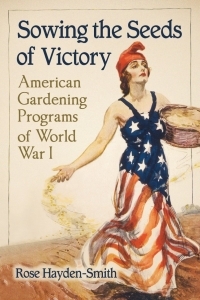
“At Loma Vista Elementary School, Rose developed an experiential demonstration garden for the fourth-grade classes,” said Curwood, who is currently director of School Nutrition Programs at the Virginia Department of Education. “Crops introduced by the Spanish and native California crops used by the Indians, grown on the grounds of the California Missions to feed the complex, were grown by students in the school garden to replicate this important part of California history and culture.”
Hayden-Smith worked with Loma Vista Elementary School teachers annually to integrate the school garden with their California history curriculum and persuaded the kitchen staff to add the garden-grown foods to the cafeteria salad bars so the students could taste them.
“Rose also provided professional development to the school nutrition program foodservice staff on the agriculture present in Ventura during WWI and II and the contribution of local Victory Gardens to the war effort. It really brought history to life and amplified their work and community connections from a historical perspective.”
During a sabbatical leave, Hayden-Smith worked with deaf and hard-of-hearing students in garden settings. She teamed with the City of Ventura to pilot-test a curriculum for middle-school age youth about sustainability through fun garden activities.
A career day at the county science fair, agriculture and natural resource journalism academies, and on-farm programs for court-mandated kids were some other learning opportunities offered by Hayden-Smith, who served as a county commissioner for juvenile justice.
“Most recently, I've been working in digital communications in Extension, which has been a wonderful fit for my skills and evolving interests,” Hayden-Smith said. “This work has also brought me back to my early career work in marketing and technology.”
An early adopter of technology, Hayden-Smith began blogging and using Twitter in 2008 as @VictoryGrower, a handle chosen to reflect her expertise in the war-time Victory Garden movement.
“It's a different ‘victory' now, but many of the goals are the same,” Hayden-Smith said. “Gardens connect people with food and food production. Food is fundamental. It's what everyone shares in common. As we are entering a more challenging era of increased population and pressure on resources, it is vital for people to understand how to cultivate food.”
Over the years, the practicing historian has delivered many presentations, commented for documentaries and podcasts and published articles about gardens. She published a book, “Sowing the Seeds of Victory: American Gardening Programs of World War 1” in 2014.
While serving as a Kellogg Food and Society Policy Fellow, beginning in 2008, Hayden-Smith developed a national media and education campaign to promote school, home and community garden efforts and public policies, publishing articles in the Huffington Post and Civil Eats. She served on the USDA People's Garden Advisory Group, visiting the White House garden groundbreaking and again in 2012, when she live-tweeted her experience.
People increasingly took notice of the academic's extraordinary communication skills.
As the social media maven's following grew, she began mentoring and encouraging UC Cooperative Extension colleagues who wanted to use social media for outreach and professional networking.
In 2011, Hayden-Smith, who had developed a reputation for being upbeat with a knack for cultivating cooperation, was tapped to lead UC ANR's strategic initiative in sustainable food systems. She was honored for her leadership, work ethic and integrity in 2013, when the Agricultural Sustainability Institute at UC Davis presented her with the Eric Bradford and Charlie Rominger Agricultural Sustainability Leadership Award.
To support UC's Global Food Initiative, Hayden-Smith was asked to curate a selection of news, reports and thought pieces from a broad range of sources that represent diverse perspectives on food. The intent was not to focus on UC, but to facilitate discussions about food that were occurring across many communication platforms. She launched the UC Food Observer blog in 2015 and complemented it with social media.
“Over the course of my UC career, I've worked with the best people: curious, driven to improve communities and inspiring all around,” Hayden-Smith said. “I've been blessed to work for a world-class institution that has fostered my creativity and need for new challenges. My biggest takeaway? It all goes so fast, the possibilities for learning new things are endless, and work – and the people you work with – are a blessing.”
Prior to working for UC, Hayden-Smith worked in the technology sector as a product manager, and public relations and marketing manager for a number of companies, including Tymshare, Wavefront Technologies and McDonnell Douglas Information System Group. She earned her bachelor's degree in English, master's degrees in education and US. history, and a Ph.D. in U.S. history and public historical studies. She began her UC career in 1989 as a student affairs officer at UCSB advising re-entry students.
“Transitions are hard, and I'm filled with both sadness and excitement,” Hayden-Smith said.
Ventura farming thrives with community support
Only an hour north of Los Angeles, one of the nation's highest-populated metropolitan centers, a vibrant farming community is actively producing millions of dollars in agricultural crops, reported Teresa O'Conner on KCET.org.
O'Conner's article features Ventura County, where farms continue to prosper despite natural disasters, encroaching housing developments, drought conditions and global competition. About $259 million worth of lemons were sold in 2017, making the citrus fruit the number-two crop for the county. The top spot belongs to strawberries at $654 million. Celery, nursery stock, raspberries, avocados, cut flowers, tomatoes, peppers and cabbage round out the rest of top ten crops. Ventura County boasts 20 additional million-dollar crops, ranging from kale, blueberries, Asian vegetables and oranges to cucumbers, spinach and lettuce.
One reason for the Ventura County agricultural industry's success is the support it enjoys from local residents. A county-wide grassroots initiative called SOAR (Save Open Space and Agricultural Resources) led to legislation that “requires a majority vote of the people in order to rezone unincorporated open space, agricultural or rural land for development." Voter-approved SOAR initiatives have been passed by the cities of Camarillo, Fillmore, Moorpark, Oxnard, Santa Paula, Simi Valley, Thousand Oaks and Ventura.
O'Conner spoke to UC Cooperative Extension advisor in digital communications Rose Hayden-Smith, editor of the UC Food Observer blog, about the connection between community food systems, the health of individuals and the survival of local farms.
“Everyone eats: everyone is a stakeholder,” Hayden-Smith said. “I would like people to be engaged with the food system, and to advocate for positive change. Think about where your food comes from and ask critical questions about the supply chain. Meet people who are involved in producing, processing, distributing and preparing the food you eat. Honor them with questions about and interest in their work.”

